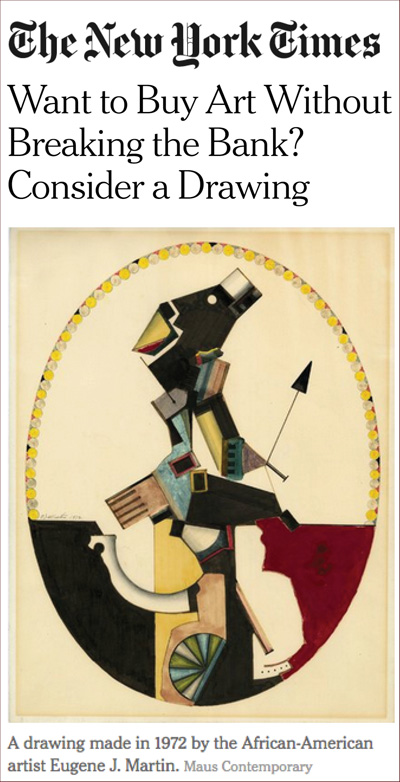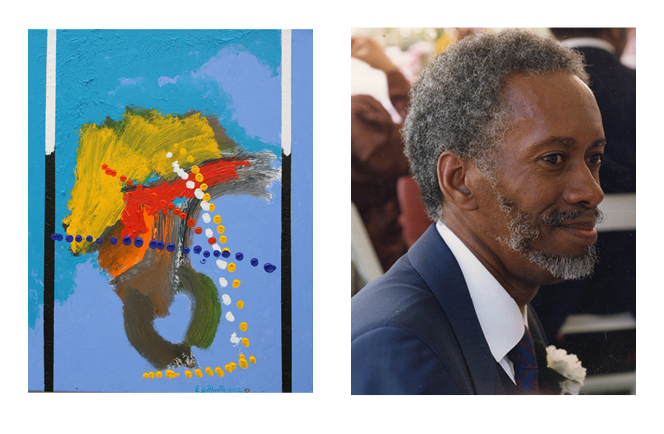Maus Contemporary
EUGENE JAMES MARTIN
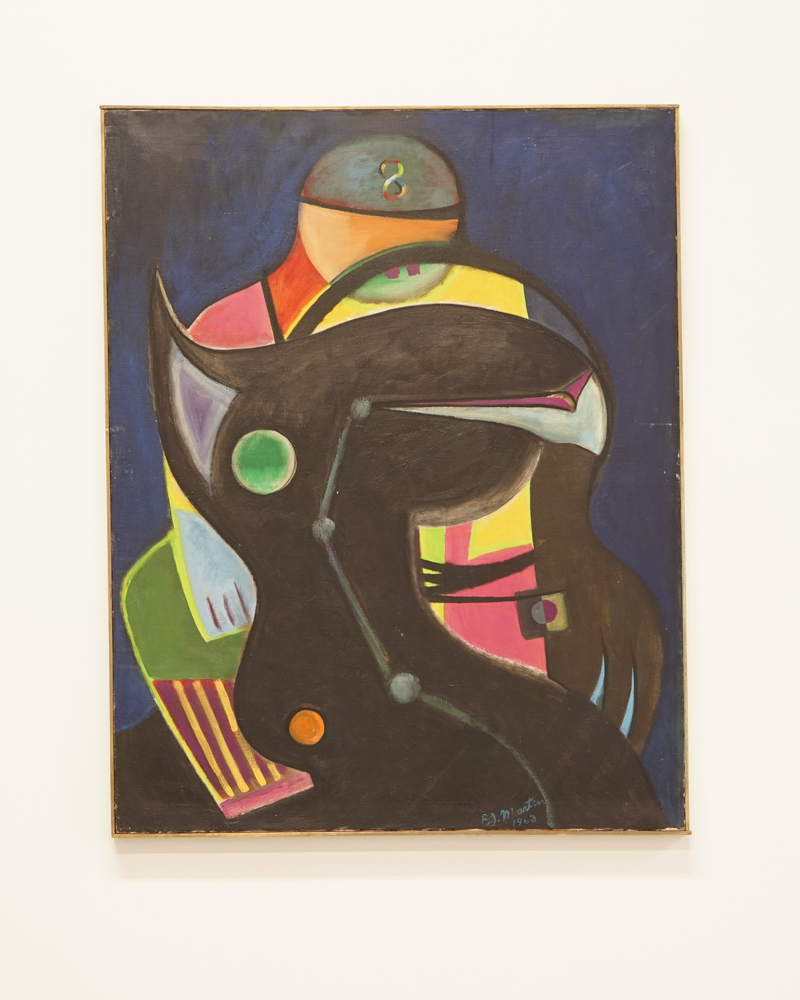 Eugene James Martin "Jockey", 1968
Eugene James Martin "Jockey", 1968
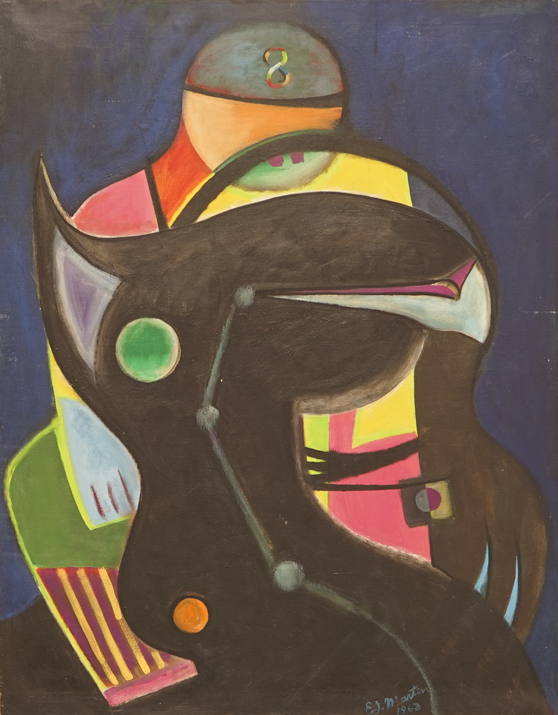 Eugene James Martin "Jockey", 1968
Eugene James Martin "Jockey", 1968
Eugene James Martin
Jockey
1968
oil on canvas, artist frame
approx. 42 by 33 in. (ca. 106,7 by 83,8 cm)
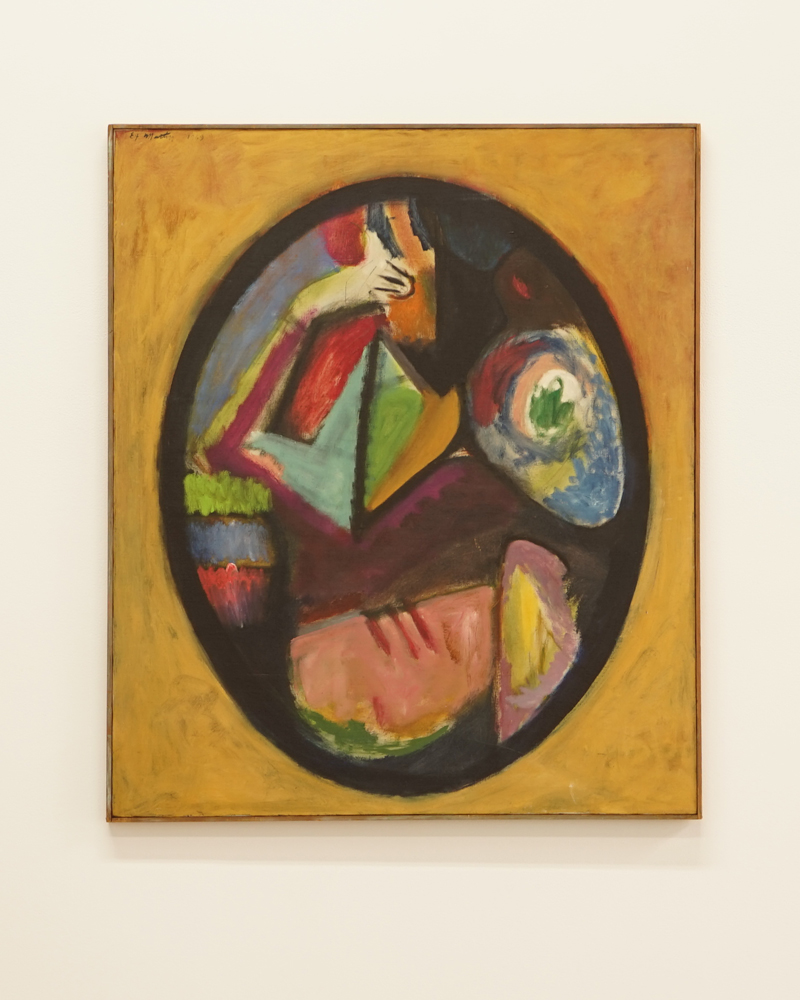 Eugene James Martin "Untitled", 1969
Eugene James Martin "Untitled", 1969
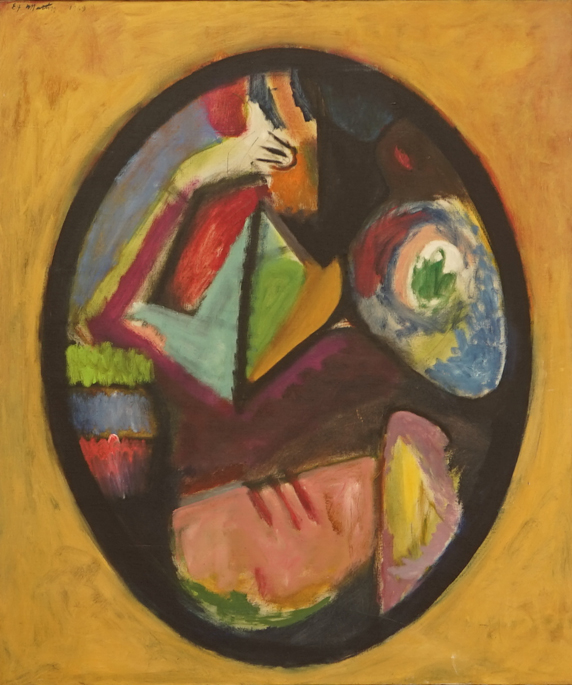 Eugene James Martin "Untitled", 1969
Eugene James Martin "Untitled", 1969
Eugene James Martin
Untitled
1969
oil on canvas, artist frame
approx. 40 by 33.75 in. (ca. 101,6 by 85,7 cm)
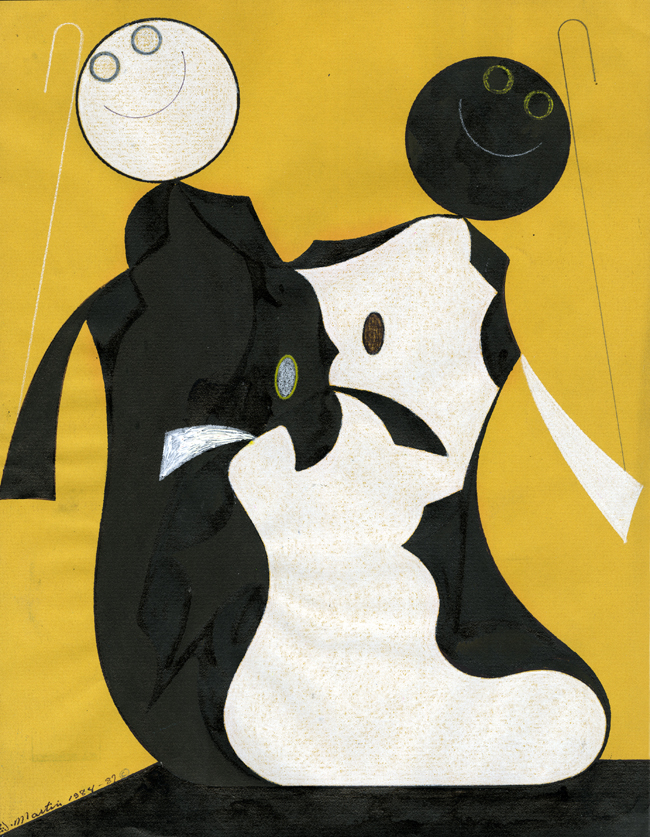 Eugene James Martin "Slap Happy"
Eugene James Martin "Slap Happy"
ink, colored pencil. graphite, and acrylic on paper
approx. 13.25 by 10.25 in. (ca. 33,8 by 26,3 cm)
click on "Slap Happy" to see a selection of available works on paper by Eugene James Martin
Eugene James Martin (1938 - 2005)
Maus Contemporary represents the Estate of Eugene J. Martin (1938 - 2005).
Eugene Martin is best known for his imaginative, complex mixed media collages on paper, his often gently humorous pencil and pen and ink drawings, and his paintings on paper and canvas that may incorporate whimsical allusions to animal, machine and structural imagery among areas of "pure", constructed, biomorphic, or disciplined lyrical abstraction. Martin called many of his works straddling both abstraction and representation "satirical abstracts”.
a selection of work by decade:
 a selection of 1960's work a selection of 1960's work |
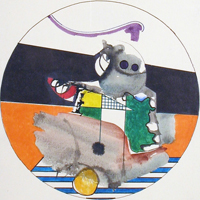 a selection of 1970's work a selection of 1970's work |
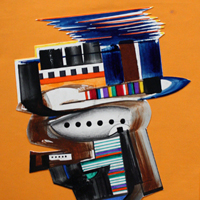 a selection of 1980's work a selection of 1980's work |
 a selection of 1990's work a selection of 1990's work |
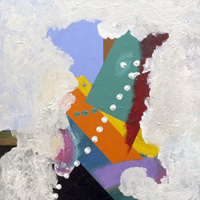 a selection of late work a selection of late work |
|||||
| 1960's work |
1970's work |
1980's work |
1990's work |
late work |
|||||
Black artists may have been marginalized, but one can no longer dismiss them as outsiders. They have been as central to Abstract Expressionism as Norman Lewis or Charles Alston and as central to the shaped canvas of the 1960s as Al Loving or Sam Gilliam. They have been as central to the space between abstraction and representation as Hale Woodruff or Beauford Delaney. They have been as central to the full recognition of women artists as Howardena Pindell or Alma Thomas, and they are central to art today.
The distinction takes on special urgency for a black Southern artist only now gaining his due, Eugene James Martin. Martin almost fits the fashion for outsider art, and if that will help others discover him, terrific. Yet nothing is half as naïve as it may seem. Born in 1938, Martin studied at the Corcoran in Washington, D.C., and his work makes plain his knowledge of Cubism, including its spatial density and collage technique. Yet he also knew the bolder colors and outlines of postwar American art. His drawings, in overlapping curves of graphite or pen and ink, treat black and sepia as the rich colors they are for him as well. He started out playing jazz, and one could call that a key influence, too. He worked quickly in both acrylic and collage, like a born improviser bouncing off others in a band. Martin sometimes described his art as “satirical abstracts,” knowing full well that it is not at anyone’s expense. Yet the label does get at the seriousness, the comedy, and the eclecticism. For him, art cannot leave personal experience behind. That may be why a figure keeps making an appearance in Martin’s work, even at its most abstract, and to judge by early titles like Detective Jones or Food and Drugs, he could be on either side of the law. He could be wielding what looks like a hammer, in another work from 2000, before deciding whether abstraction can survive the blows.
Now that abstraction is back, big time, but often touched by representation, Martin’s questioning is newly relevant. Like many younger artists, he might have leaped straight from the clarity of an earlier Modernism to American Pop Art and the graphic novel, while some of those floating fields of color do have a parallel in Hans Hoffman. One can see him putting abstraction through its paces, but with plenty of interruptions along the way. Paintings from the 1990s, just before and after Martin moved to Louisiana, have a newfound energy, but also a greater simplicity. Their ground now looks like a grid, although a line of one color might leap across a rectangle, over a brushier green, to land on the other side. In his last years, before his death in 2005, his art becomes sparer, purer, and also less regular. Its subject might be a single descending brushstroke, but then Martin’s real subject was painting all along. And painting here begins and ends with abstraction.
Black Southern art can hardly avoid questions of identity in those enigmatic figures and the space in which they live, and Martin’s color contrasts resemble those of Jacob Lawrence and Romare Bearden. Yet that just adds to the ongoing riddle of whether one can distinguish an African American abstraction—and how. One might look for answers starting here.
Eugene James Martin (Washington, DC, 1938 - Lafayette, LA, 2005) is known for his often gently humorous works that may incorporate whimsical allusions to animal, machine and structural imagery among areas of “pure”, constructed, biomorphic, or disciplined lyrical abstraction. Martin called many of his works straddling both abstraction and representation “satirical abstracts”. His work is included in numerous Museum collections, including the High Museum of Art, Atlanta, GA; the Ogden Museum of Southern Art, New Orleans, LA; the Alexandria Museum of Art, Alexandria, LA; the Stowitts Museum and Library, Pacific Grove, California; the Schomburg Center for Research in Black Culture, New York, NY; the Paul R. Jones Collection of African American Art, University of Delaware, Newark, DE; the Mobile Museum of Art, Mobile, AL; the Sheldon Museum of Art, Lincoln, NE; the Ohr-O’Keefe Museum of Art, Biloxi, MS; the Masur Museum of Art, Monroe, LA; the Louisiana State University Museum of Art, Baton Rouge, LA; the Walter O. Evans Collection of African American Art, Savannah, GA; and the Munich Museum of Modern Art in Munich, Germany.
